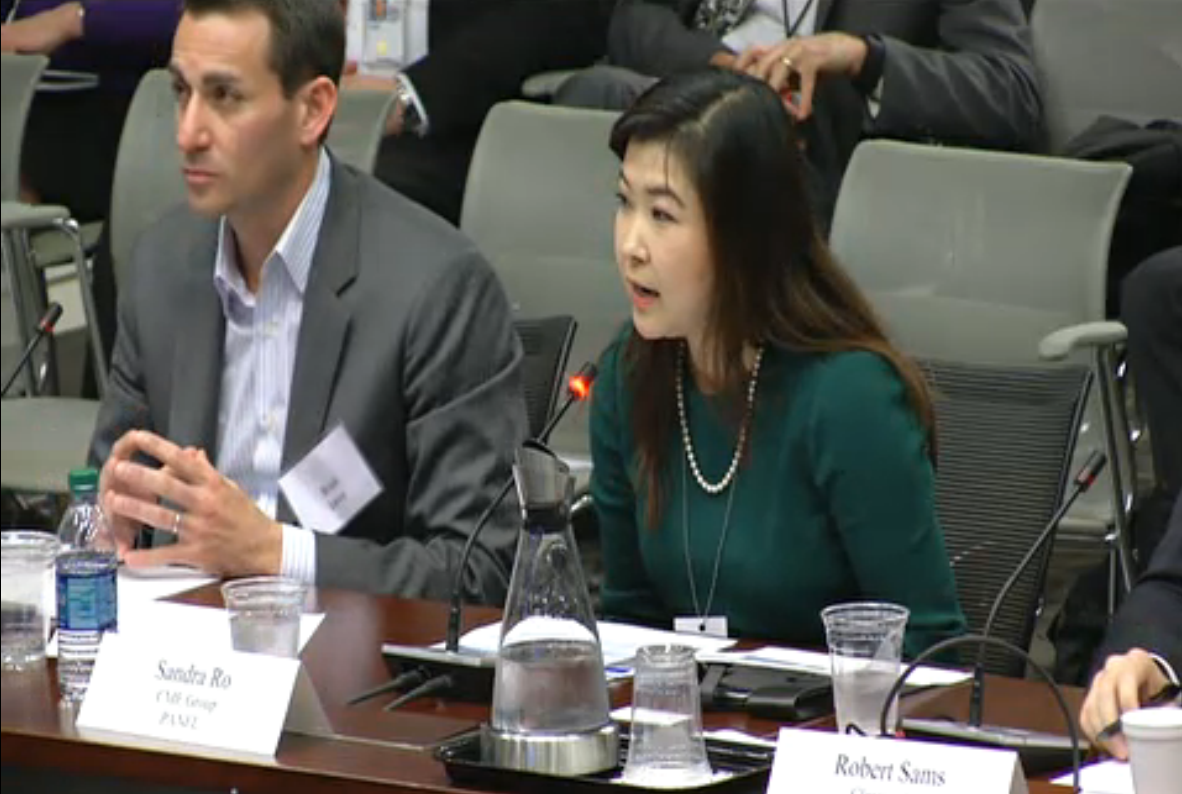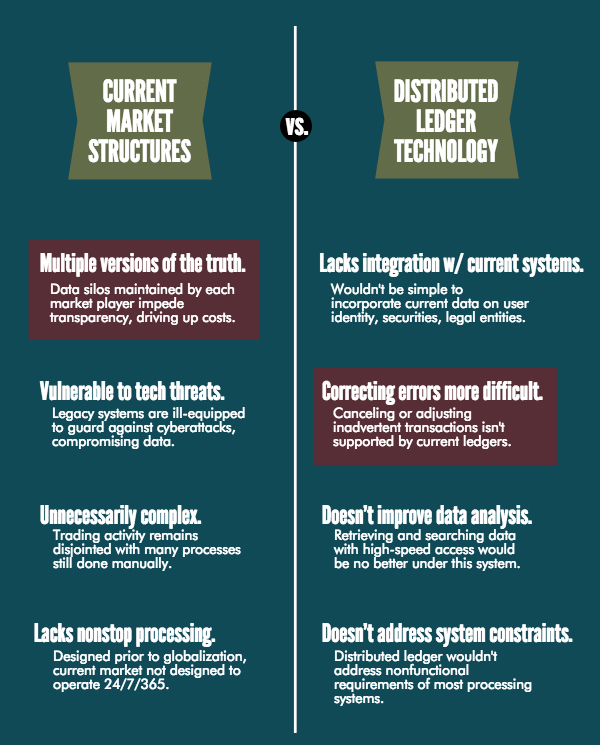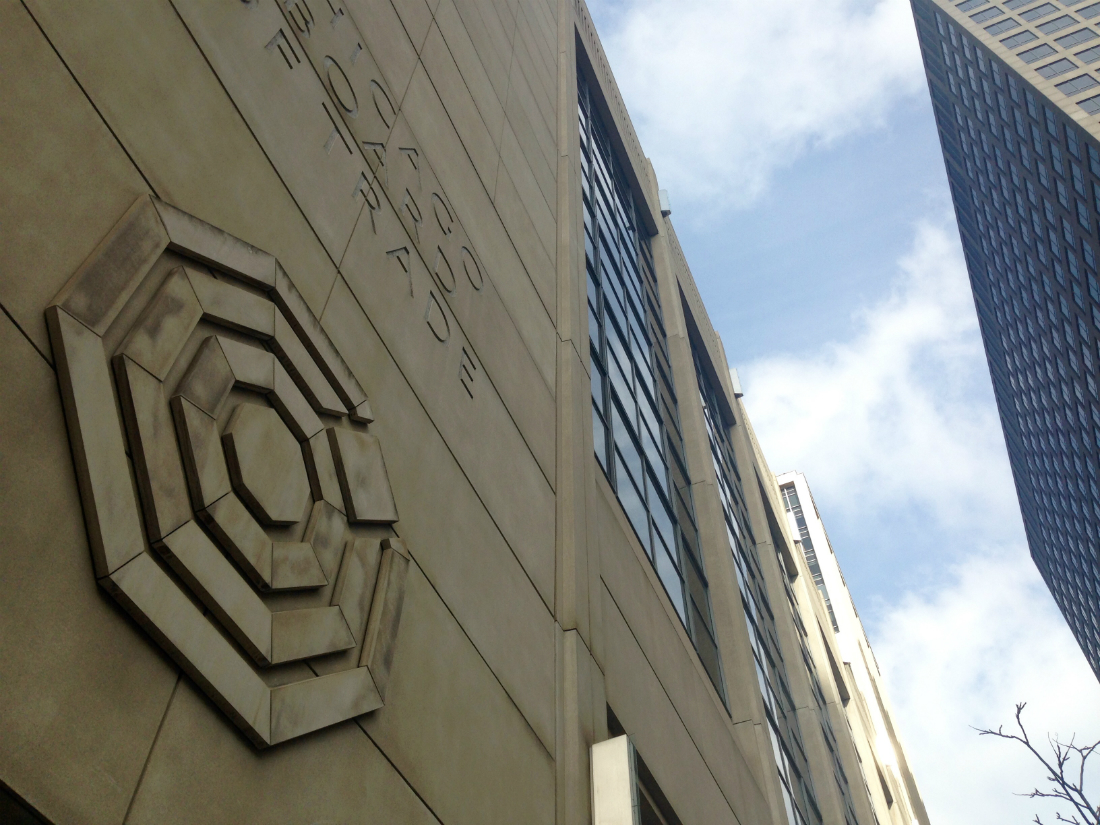By Steven Porter
J. Christopher Giancarlo released a podcast last month alerting financial markets to the biggest trends he expects them to face in the coming decade. Among the most pressing issues he named were cyber threats and disruptive technology.
Giancarlo, a commissioner with the U.S. Commodity Futures Trading Commission, devoted a good portion of his talk to the increasingly digital and automated space in which traders work. As much as 70 percent of regulated futures trading in the U.S. is now done by an algorithm, he noted.
“It is clear that finance is increasingly becoming an industry where machines and humans are swapping their dominant roles, transforming modern finance into what scholar Tom Lin has called ‘cyborg finance,’” Giancarlo said.
Despite his earnest tone, Giancarlo suggested marketplace stakeholders might already be on the right track by investing tremendous resources in a promising innovation regarded by some as controversial: blockchain technology.
Blockchain, a decentralized networking protocol made famous by the cryptocurrency Bitcoin, could prove useful in the financial sector as well, according to proponents. Major players in global finance have responded by forming coalitions to test whether implementing blockchain would be feasible.
Chicago-based CME Group Inc. joined one such coalition, The Linux Foundation’s Hyperledger Project, earlier this month.

The idea is to promote efficiency and transparency in trading by spreading ledger data for all traders out across a decentralized network, Robert Sams, CEO of Clearmatics Technologies Ltd., told regulators during a CFTC Technology Advisory Committee meeting this week.
With a decentralized ledger, each node in the network would maintain its own record of all transactions in the marketplace, running computations independently. An algorithm would then certify each transaction by surveying the results reached by the independent nodes.
“But in today’s system,” Sams continued, “consensus on the global state of who owns what or who owes what to whom is obtained by many iterations of reconciliation, which is usually labor-intensive, expensive and slow.”
Blockchain technology could make a decentralized clearing network possible, perhaps offering an alternative to central counter-party clearinghouses, Sams added.
The Dodd-Frank Wall Street Reform and Consumer Protection Act, passed more than five years ago, required that certain swaps be cleared in exchanges. Certain transactions that previously took place outside exchanges entirely have since brought additional revenue to CME Group Inc. and others.
But Giancarlo, the CFTC commissioner, suggested policy reforms might be in order, arguing in his podcast that Dodd-Frank focuses on market failures of the past and doesn’t provide any guidance on the biggest current and future threats to U.S. financial markets.
“Just as peacetime generals are always fighting the last war and economists fight the last depression, so too to do financial regulators outlaw past market abuses that are not a looming threat to our financial markets and economies.”
Why blockchain?
Ben Lloyd Pearson, an open source technologist with Samsung Open Source Group who has worked with The Linux Foundation in the past, said the potential applications for blockchain technology are widespread because it can be used to verify any digital transaction.
“The last time I had to wire money out of my bank account, I had to go into the office, meet with a manager, fill out a bunch of paperwork, pay them like $20 and wait seven to 10 days,” Pearson said. Had he used Bitcoin, he could have sent money directly to an address without a bank’s verification.
Whereas blockchain was viewed as a “fringe culture” two to three years ago, there’s since been a corporate awakening, Pearson said.
“We’re at a point where all of the big financial companies have realized that they’re going to have to start getting involved in blockchain technology,” Pearson added.
Brad Levy, CEO of financial information firm MarkitSERV, told regulators during this week’s meeting that he believes operational risks and costs could be immediately reduced by implementing blockchain technology in an exchange setting.
But such a network would and should look quite different from the Bitcoin network, Levy said, characterizing the cryptocurrency’s users as favoring anonymity.
“We don’t think that that’s necessarily the model that our industry will adopt,” he added. “Identity will be key.”
Along those lines, Levy assured the CFTC that he would expect regulators to gain more immediate access to trade data under a blockchain system.
“We think about the regulators as a node. …. They themselves become part of the network and have their own permission-ing, based on whatever rights they’re supposed to have as regulators,” Levy said.
‘So what?’
Despite all the rosy-eyed forecasting on the potential merits of blockchain technology, even some supporters are calling for a tempered approach to this innovation.
Sandra Ro, who leads digitization efforts for CME Group Inc., said she’s a bit tired of hearing the term “blockchain.”
“I think it’s one of the most overused words these days, and I think it’s pretty much in the press now everyday, if not every other day,” Ro told CFTC regulators.

Ro herself believes there’s significant potential in the technology’s future. But as industry continues to spend large sums of money in an effort to build the necessary infrastructure, it’s time to question claims blockchain will solve everything, she said.
“I think the ‘So what?’ factor is what we start asking this year,” Ro said. “Not every use case makes sense. To me, we’ve got to start parsing down what is actually possible with this technology, and it’s going to take a number of years.”
Limitations

Levy seconded Ro’s point: “We cannot rush the end game,” he said.
“Apple did not invent the Internet, but they certainly have stitched it together and taken advantage of building out the ecosystem,” Levy said, citing the iPhone’s revolutionary status as a key improvement on the web’s base technology. “And we think blockchain will evolve in a similar way, in a similar time frame — i.e. many years, not months — but we do think we’ll see gains in the short run.”
CFTC Commissioner Sharon Bowen indicated that regulators and industry leaders seem to be on the same page.
“This technology, even more nascent than algorithmic trading, carries with it tremendous potential for electronic trading and electronic commerce more broadly,” Bowen said in a prepared statement. “Yet, before we can make use of this technology, we need to understand it.”


